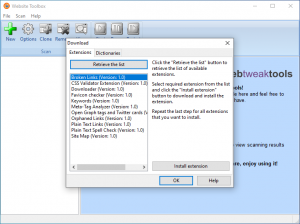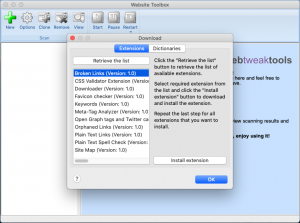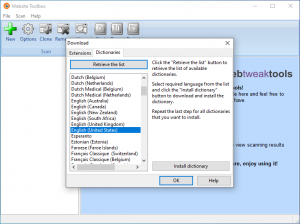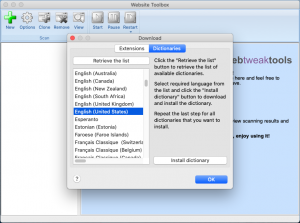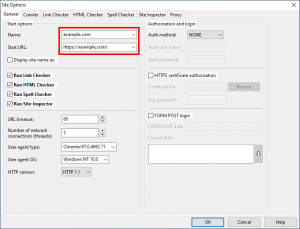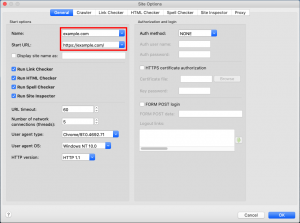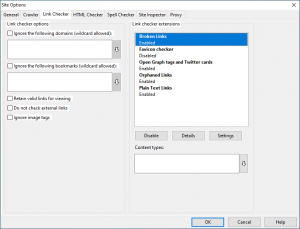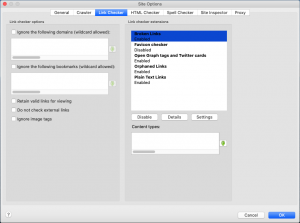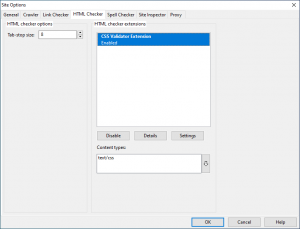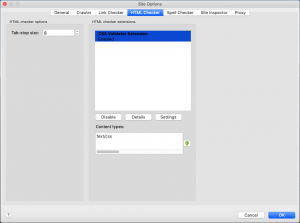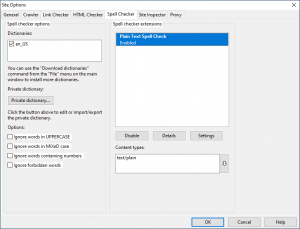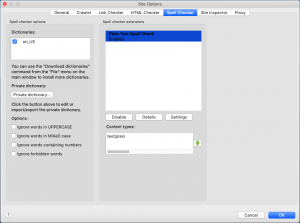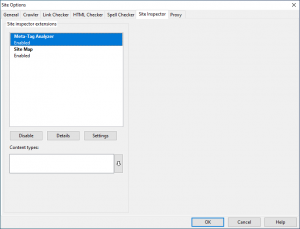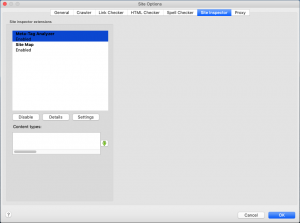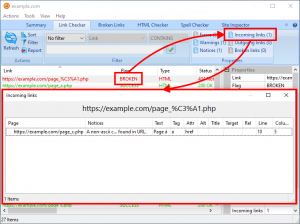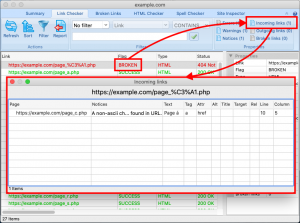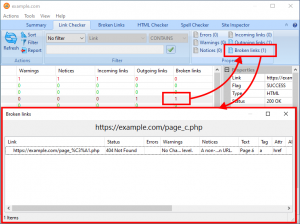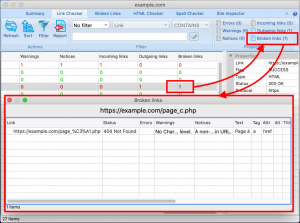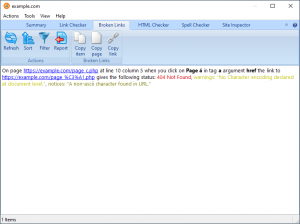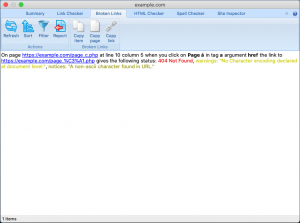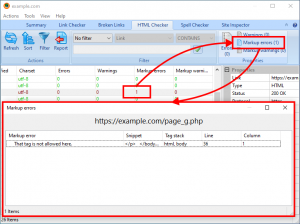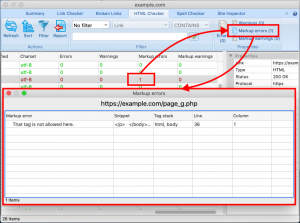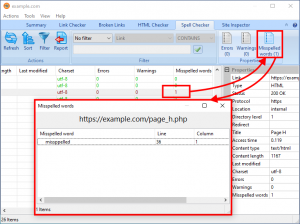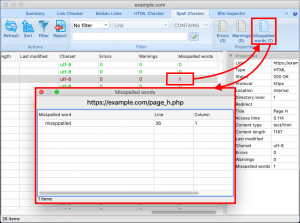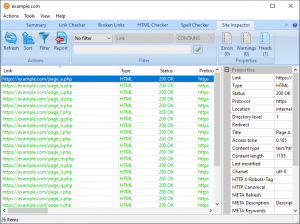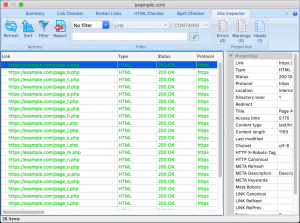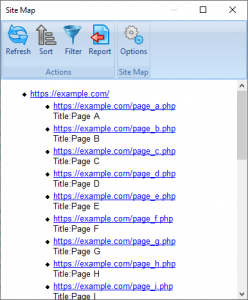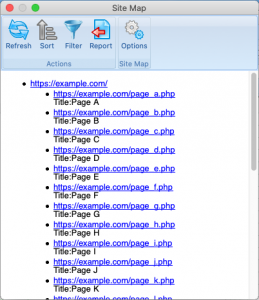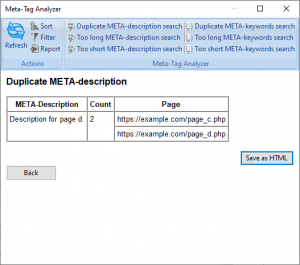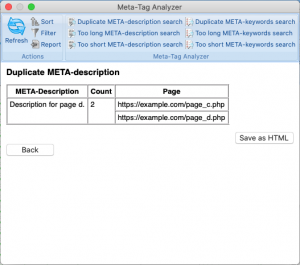Website Toolbox – Getting started
Installation and Extensions
Download the latest version of the software from our web site, then double-click the downloaded file and follow the onscreen instructions to complete your installation.
When the program starts, we recommend downloading all extensions that suits your fancy. To install extensions, click the "Retrieve the list" button to retrieve the list of available extensions. Select required extension from the list and click the "Install extension" button to download and install the extension. Repeat the last step for all extensions that you want to install.
You can also install additional dictionaries for spell checker. Dictionaries are installed in the same manner as extensions.
Setting up website options
Click the "New" button to create a new scan. It is enough to enter "Name" and "Start URL" to run a scan with default settings.
On the "Link Checker" tab you can enable extensions that you want to use in this particular scan.
On the "HTML Checker" tab you can enable extensions that you want to use in this particular scan.
On the "Spell Checker" tab you can enable extensions that you want to use in this particular scan.
On the "Site Inspector" tab you can enable extensions that you want to use in this particular scan.
Checking website for broken links, HTML or CSS errors, misspelled words and inspecting website for SEO elements
Once the scan is created, you can start it by clicking the "Start" button. You can use the "Pause" button to pause the scan and "Start" button to resume. When the scan has some data, the "Options" button is disabled, and it will be disabled unless you click the "Restart/Reset content" button. However, the "Clone" button is enabled in the paused or finished state, you can click it to view scan options. Also, it is safe to resume the scan if it has paused accidentally in such circumstances as power outages.
Viewing link checker results
Click the "View" button to view results. Broken links are shown in light red and pages that have broken links in dark red. You can use sort by "Flag" column options to show broken link first, or filter them with filter options. Each broken link may originate from different pages, you can click the "Incoming links" button to view those pages.
Alternatively, you can sort or filter by the "Broken links" column for pages that have broken links. Each page may contain different number of broken links, you can click the "Broken links" button to view those links.
Finally, the "Broken Links" extension displays broken links in human-readable view.
Viewing html checker results
Click the "View" button to view results. Broken links are shown in light red and pages with markup errors in dark red. You can sort or filter by the "Markup errors" or "Markup warnings" column for pages that have markup errors or warnings. You can click the "Markup errors" or "Markup warnings" button to view those markup errors or warnings.
Viewing spell checker results
Click the "View" button to view results. Broken links are shown in light red and pages with misspelled words in dark red. You can sort or filter by the "Misspelled word" column for pages that have misspelled words. You can click the "Misspelled words" button to view those words.
Viewing website inspector results
Click the "View" button to view results. Broken links are shown in light red and pages with warnings in dark yellow. You can view website SEO elements in the "Properties" section.
Additionally, if you have the "Site Map" extension installed, you can view site map by "Tools/Site Map" menu command.
Among others, you can install the "Meta-Tag Analyzer" extension to view duplicate META-descriptions or META-keywords.

